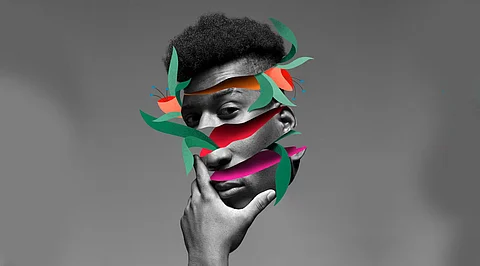

Generative Art is a particular type of art that frequently utilizes independent frameworks or calculations to produce content randomly. The list of tutorials, tools, and resources used by new creators and collectors in the NFT space has grown with the movement over several decades.
Generative Art NFTs-What do they mean?
To acquire top NFTs and capitalize on the craze that has taken over the market for digital art, collectors are now willing to part with a lot of money.
To put it another way, until now, NFTs have been the result of human creativity being supported by technology. If you look through the largest NFT marketplaces in the world, like Nifty Gateway or OpenSea, you are almost certainly going to find art that was created by humans. Additionally, those are the tokens that command premium prices.
Get ready because AI might become your next favorite artist, and you probably haven't heard of it before. Workmanship made completely by computerized reasoning has been promoted as the 'following large thing' and that is gotten authorities purchasing in. Projects like the AI Art House feature generative art NFTs that so closely resemble the likes of Monet, Mondrian, and van Gogh that you could be forgiven for thinking they are long-lost art pieces by past geniuses. Last year, a collection of NFTs created by a robot artist named Botto sold for more than $1.1 million.
However, in the end, AI-generated art can produce one-of-a-kind works that surpass human creativity and exploration.
What Is Generative Art and How Do They all Work?
Generative art is a form of digital or traditional art that is created using algorithms, mathematical equations, or rules-based processes. It is a type of art that involves the use of code, software, or other automated techniques to generate artwork.
In generative art, the artist creates a set of instructions or rules that govern how the artwork should be generated. These instructions can be based on simple or complex mathematical algorithms, random processes, or data-driven inputs. The output of the generative art process is often unpredictable, as the artist may not have complete control over the final result.
Generative art can take many forms, including digital images, animations, music, and even physical installations. Some artists may work exclusively with code and computer software, while others may incorporate traditional art techniques into their generative process.
One of the key features of generative art is its ability to create unique and original pieces of art that are not replicable. Each output of a generative art system is different, even when starting from the same set of instructions or rules. This allows for an endless number of possible outcomes, making generative art an exciting and constantly evolving field.
NFTs, or non-fungible tokens, have recently become popular in the art world as a way to authenticate and sell digital artwork. NFTs are unique digital tokens that are stored on a blockchain, which is a decentralized and secure ledger that records transactions.
Generative art is a type of digital art that is created using algorithms and other computational processes. Because generative art is often created using code, it can be difficult to prove ownership and authenticity. NFTs provide a solution to this problem by providing a way to verify ownership and prove the authenticity of the artwork.
To create an NFT for a piece of generative art, an artist would first create the artwork using code. They would then mint the NFT, which involves creating a digital token that is unique to the artwork. The NFT would be stored on a blockchain, along with information about the artwork and its ownership.
Once the NFT is created, the artist can sell it on a marketplace or auction it off to collectors. Because NFTs are unique and verifiable, they can command high prices. Some NFTs have sold for millions of dollars.
However, there are some concerns about the environmental impact of NFTs, as the process of minting and trading them requires a significant amount of energy. Additionally, there are concerns about the sustainability of the market for NFTs and whether it is a bubble that will eventually burst.
Join our WhatsApp Channel to get the latest news, exclusives and videos on WhatsApp
_____________
Disclaimer: Analytics Insight does not provide financial advice or guidance. Also note that the cryptocurrencies mentioned/listed on the website could potentially be scams, i.e. designed to induce you to invest financial resources that may be lost forever and not be recoverable once investments are made. You are responsible for conducting your own research (DYOR) before making any investments. Read more here.
